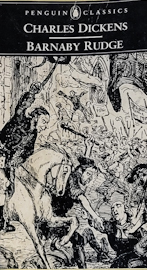Epic narration and a great plot: it would make exciting cinema
THE GORDON RIOTS which occurred in London in 1780 were a reaction to a law passed in 1778. The law gave rights to Roman Catholics and aroused the hostility of no-papists (anti-Catholics). The disturbances, which resulted in much destruction of property in London were instigated by the hateful propaganda of Lord George Gordon (1751-1793).
I first became interested in the Gordon Riots when I was writing my book about Hampstead and its surroundings. The rioters headed out of London towards Hampstead on their way to Lord Mansfield’s country house at Kenwood. Mansfield’s house in London’s Bloomsbury district had just been razed to the ground by the riotous mob, and they had hoped to do the same thing at Kenwood. Fortunately, they were stopped just before they reached Mansfield’s country mansion.

Given my interest in the above-mentioned, I was excited to find that Charles Dickens had written a novel about the riots: “Barnaby Rudge”. It was first published in 1841.
Barnaby Rudge is a peculiar character, a simpleton whose best friend is a talking raven. At first, it was not obvious to me why the novel should bear his name, but slowly his importance in this complex tale becomes evident. Although his role is important, there are a large number of other equally important characters woven into the plot.
Dickens explores the private antagonisms between some individuals as well as attractions between others, and gradually weaves these relationships into the ever increasing rumblings that develop into riots and mindless destruction.
Dickens wrote long before cinematography was invented, yet his written descriptions of both peaceful scenes and incredible chaos have a vividness and impact that much modern cinema (especially some blockbuster Bollywood productions) are able to throw at their audiences. And Dickens does this with words alone: without Dolby sound and dramatic photography.
In brief, I found “Barnaby Rudge” to be a veritable tour-de-force. My enjoyment of the book was enhanced by the fact that the Penguin edition I was reading was richly supplied with notes (mainly historical) researched and written by Gordon Spence.
Before reading “Barnaby Rudge”, I knew that the Gordon Riots were a fairly horrendous episode in British history. However, Dickens, who was writing just 40 years after they had occurred and might have known people who had witnessed them, brought this age of turmoil to life in a credibly dramatic way.



